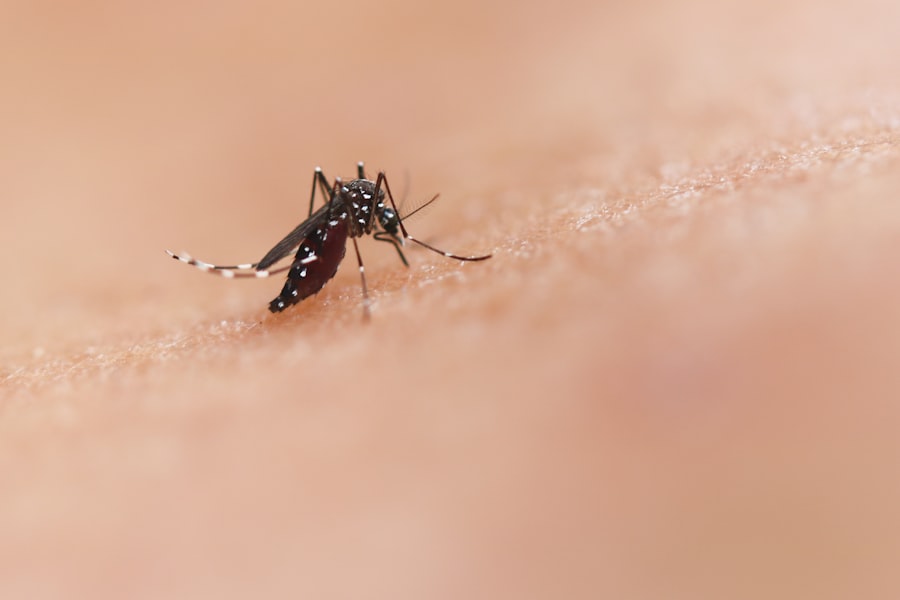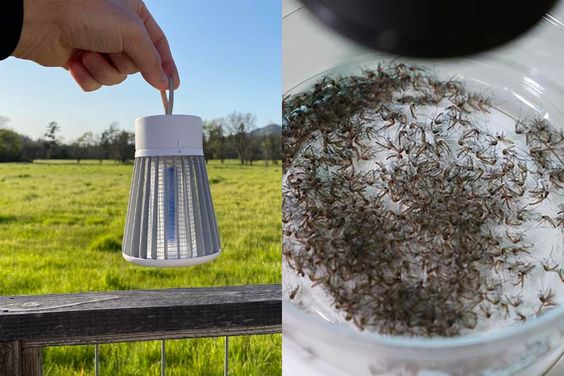
Mosquitoes are not only annoying pests, but they also pose a significant threat to public health. They are known carriers of various diseases such as malaria, dengue fever, Zika virus, and West Nile virus. Controlling mosquito populations is crucial in preventing the spread of these diseases and protecting public health. Mosquito traps play a vital role in mosquito control efforts by capturing and killing adult mosquitoes, reducing their numbers and preventing them from breeding.
Mosquito trap research is of utmost importance in improving public health and environmental conservation. By studying the behavior and biology of mosquitoes, researchers can develop more effective and efficient traps that target specific mosquito species. This research also helps in understanding the factors that affect mosquito populations, such as climate change and habitat destruction. By gaining a deeper understanding of these factors, scientists can develop strategies to mitigate their impact on mosquito populations and prevent disease outbreaks.
Current Trends in Mosquito Trap Research: An Overview
Mosquito trap research is a rapidly evolving field, with new advancements and technologies being developed regularly. Staying up-to-date with current trends in mosquito trap research is essential for researchers, public health officials, and pest control professionals. These trends include the development of more efficient trapping mechanisms, the use of attractants to lure mosquitoes into traps, and the integration of technology for remote monitoring and data collection.
One current trend in mosquito trap research is the use of attractants to enhance trap effectiveness. Attractants can be chemical compounds that mimic the scent of human sweat or breath, or they can be visual cues such as light or color. By using attractants, researchers can increase the capture rate of mosquitoes and target specific species that are known carriers of diseases.
Another trend in mosquito trap research is the integration of technology for remote monitoring and data collection. This allows researchers to collect real-time data on mosquito populations, trap effectiveness, and environmental factors that may affect mosquito populations. Remote monitoring also enables researchers to make adjustments to trap deployment and maintenance based on the data collected, improving the overall efficiency of mosquito control efforts.
Types of Mosquito Traps: A Comparative Analysis
There are several types of mosquito traps available, each with its own advantages and disadvantages. Understanding the effectiveness and efficiency of each type of mosquito trap is crucial in choosing the right trap for specific mosquito control needs.
One type of mosquito trap is the light trap, which uses ultraviolet light to attract mosquitoes. When mosquitoes are drawn to the light, they are sucked into a collection chamber where they are trapped and killed. Light traps are effective in capturing a large number of mosquitoes, but they may also attract other insects, reducing their overall efficiency.
Another type of mosquito trap is the CO2 trap, which uses carbon dioxide to lure mosquitoes. Mosquitoes are attracted to carbon dioxide as it is a byproduct of human respiration. CO2 traps release a steady stream of carbon dioxide, mimicking human breath, and when mosquitoes are drawn to the trap, they are captured and killed. CO2 traps are effective in targeting specific mosquito species that are attracted to human breath, but they may not be as effective in capturing other species.
Mosquito Trap Design: Key Features and Innovations
An effective mosquito trap design should have several key features that maximize its trapping efficiency. These features include an attractive lure, a trapping mechanism that prevents escape, and a collection chamber that is easy to clean and maintain.
One key feature of an effective mosquito trap design is the use of an attractive lure. This can be a chemical attractant that mimics human scent or breath, or it can be a visual cue such as light or color. The lure should be strong enough to attract mosquitoes from a distance but should not overpower other attractants in the environment.
Another key feature of an effective mosquito trap design is a trapping mechanism that prevents escape. Mosquitoes are small and agile insects, so the trapping mechanism should be designed in a way that once they are captured, they cannot escape. This can be achieved through the use of sticky surfaces, fans that create a strong airflow, or physical barriers that prevent mosquitoes from exiting the trap.
Factors Affecting Mosquito Trap Performance: Challenges and Solutions
Several factors can affect the performance of a mosquito trap, including environmental conditions, mosquito behavior, and trap maintenance. Understanding these factors and finding solutions to overcome the challenges they present is crucial in maximizing trap efficiency.
One factor that can affect mosquito trap performance is environmental conditions. Mosquitoes are more active during certain times of the day and under specific weather conditions. Trap deployment should take into account these factors to ensure maximum capture rates. For example, some mosquito species are more active during dawn and dusk, so traps should be deployed during these times to target these species.
Another factor that can affect mosquito trap performance is mosquito behavior. Different mosquito species have different feeding and breeding habits, so traps should be designed to target specific species. For example, some species are attracted to human scent or breath, while others are attracted to stagnant water or certain types of vegetation. By understanding the behavior of target mosquito species, researchers can develop traps that effectively lure and capture them.
Mosquito Trap Efficiency: Metrics and Evaluation Techniques

Evaluating the efficiency of a mosquito trap is crucial in determining its effectiveness in controlling mosquito populations. Several metrics and evaluation techniques are used to assess trap efficiency.
One metric used to evaluate mosquito trap efficiency is the capture rate, which measures the number of mosquitoes captured per unit of time. A high capture rate indicates that the trap is effective in attracting and capturing mosquitoes.
Another metric used to evaluate mosquito trap efficiency is the selectivity rate, which measures the proportion of target mosquito species captured compared to non-target species. A high selectivity rate indicates that the trap is effective in targeting specific mosquito species.
Mosquito Trap Deployment: Strategies and Best Practices
Deploying mosquito traps in the right locations and at the right times is crucial in maximizing their effectiveness. There are several strategies and best practices that can be followed to ensure successful trap deployment.
One strategy for mosquito trap deployment is to place traps in areas where mosquitoes are known to breed or rest. This can include areas with stagnant water, such as ponds, swamps, or ditches, as well as areas with dense vegetation where mosquitoes can find shelter.
Another strategy for mosquito trap deployment is to place traps in areas where human-mosquito interactions are high. This can include outdoor recreational areas, parks, or residential areas where people spend a lot of time outdoors.
Mosquito Trap Maintenance: Essential Tips and Guidelines
Proper maintenance of mosquito traps is essential in ensuring their long-term effectiveness. There are several tips and guidelines that should be followed to maintain a mosquito trap properly.
One essential tip for mosquito trap maintenance is to regularly clean and empty the collection chamber. Mosquitoes trapped in the collection chamber can decompose over time, leading to unpleasant odors and potential health hazards. Regular cleaning and emptying of the collection chamber prevent this from happening.
Another essential tip for mosquito trap maintenance is to replace attractants regularly. Chemical attractants can lose their effectiveness over time, so they should be replaced according to the manufacturer’s instructions. This ensures that the trap remains attractive to mosquitoes and maintains its trapping efficiency.
Future Directions in Mosquito Trap Research: Promising Technologies and Approaches
The future of mosquito trap research holds promising technologies and approaches that could revolutionize mosquito control efforts. These include the use of genetic modification to create sterile mosquitoes, the development of autonomous trapping systems, and the integration of artificial intelligence for real-time data analysis.
One promising technology in mosquito trap research is the use of genetic modification to create sterile mosquitoes. This involves modifying the genes of male mosquitoes so that they produce sterile offspring when they mate with wild females. By releasing these sterile males into the wild, researchers can reduce mosquito populations without the need for chemical pesticides.
Another promising approach in mosquito trap research is the development of autonomous trapping systems. These systems use sensors and artificial intelligence to detect and capture mosquitoes without human intervention. This allows for continuous monitoring and trapping of mosquitoes, improving the overall efficiency of mosquito control efforts.
Implications of Mosquito Trap Research for Public Health and Environmental Conservation
Mosquito trap research plays a crucial role in improving public health and environmental conservation. By developing more effective and efficient traps, researchers can reduce mosquito populations and prevent the spread of diseases. This research also helps in understanding the factors that affect mosquito populations, allowing for the development of strategies to mitigate their impact.
The future of mosquito trap research holds great promise with advancements in technology and approaches. These advancements have the potential to revolutionize mosquito control efforts and improve public health outcomes. By staying up-to-date with current trends in mosquito trap research and implementing best practices in trap deployment and maintenance, we can make significant progress in controlling mosquito populations and protecting public health.
